Medical Robots are transforming healthcare through advanced automation. Types of medical robots helps medical indsutry in multip-level.
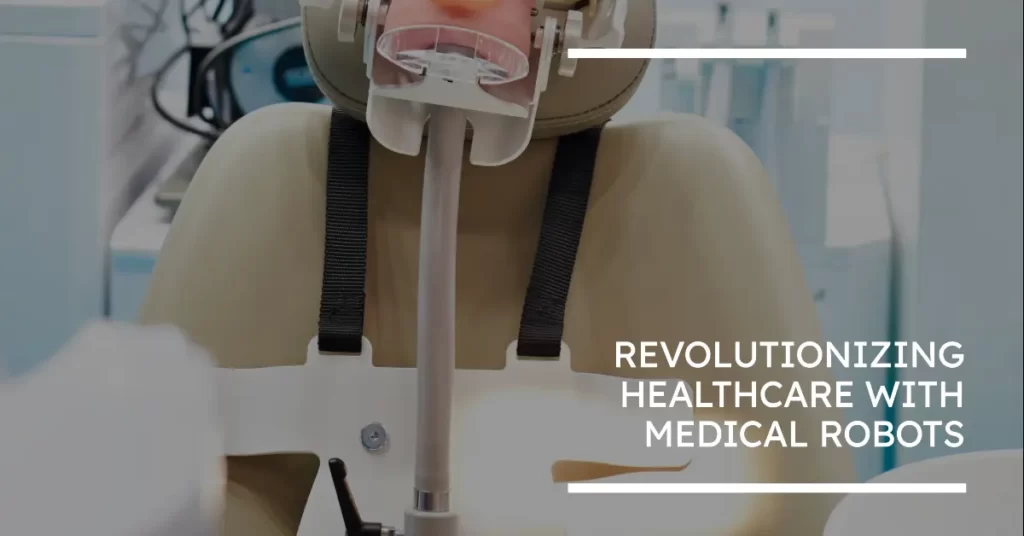
The fusion of technology and healthcare has always held the promise of transforming lives. Among the standout advancements, medical robots stand as a testament to human ingenuity. Bridging precision with medical expertise, these robots are increasingly becoming the hands and eyes of surgeons, caregivers, and medical professionals. From assisting intricate surgeries to facilitating rehabilitation, medical robots are broadening horizons in patient care.
It is crucial to realize that medical robots are changing the medical industry. and we will discuss medical robots, their types, how they are made, and their revolutionary impact on healthcare.
What are Medical Robots
In today’s rapidly evolving medical landscape, robots are increasingly playing a transformative role. Medical robots are more than mere machines. They represent the intersection of cutting-edge technology and medical expertise, striving to improve patient outcomes and streamline healthcare processes. At their core, medical robots are automated systems specifically designed and constructed to perform clinical tasks. These tasks can range from surgical assistance to patient care and even administrative duties in a hospital setting.
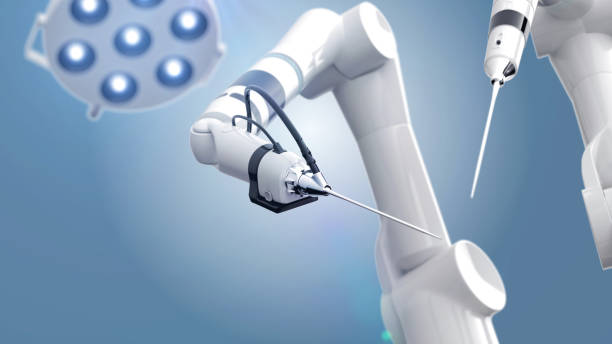
3d render of a robotic surgery scene
medical robot
Their functionality isn’t restricted to a single domain. Whether it’s an intricate surgical procedure requiring extreme precision or the delivery of medicines in a large hospital, these robots are equipped to handle a diverse array of functions. This vast spectrum of operations not only reduces human error but also optimizes outcomes by ensuring consistent performance.
Evolution Over Time
The journey of medical robots is nothing short of fascinating. From their humble beginnings as basic automated systems to the sophisticated entities we see today, they have continuously evolved, adapting to the ever-changing demands of the medical sector.
Table: Evolution of medical robots
| Section | Subsection | Time Period | Notable Developments/Applications | Key Features/Devices | Benefits |
|---|---|---|---|---|---|
| Evolution of Medical Robots | Initial Days | 1970s-1980s | Emergence of basic robotic systems for hospitals | – | Transporting goods, simple administrative tasks |
| Rise of Surgical Robots | 1990s-2000s | Introduction of surgical robots | – | Assisting in surgeries, patient care | |
| Current Era | 2010s-Present | AI integration, advanced sensors, and haptic feedback | – | Complex surgeries, rehabilitation, remote consultations | |
| Different Types of Medical Robots | Surgical Robots | – | Advanced applications in surgeries | Da Vinci Surgical System, RAS Devices | Minimally invasive surgeries, reduced infection risk, greater precision |
| Rehabilitation Robots | – | Rehabilitation and therapy | Gait Training Robots, Robotic Prosthetics and Exoskeletons | Customizability, consistent training, monitors and adjusts therapy | |
| Hospital and Pharmacy Robots | – | Daily operations in hospitals/pharmacies | TUG Robots, Pill-Picking Robots | Efficient transport, speed, accuracy in dispensing |
What Are the Different Types of Medical Robots?
Broadly classifying, medical robots can be segmented into several categories, each fulfilling distinct roles in the healthcare ecosystem. Let’s explore these categories further.
1. Surgical Robots

Surgical robot
One of the most advanced applications of robotics in healthcare is in the domain of surgery. These robots, often guided by surgeons, provide a magnified, 3D view of the surgical site, and can make tiny, precise movements, translating into smaller incisions and less trauma for the patient.
- Da Vinci Surgical System: Perhaps the most recognized name in this space, the Da Vinci allows surgeons to perform complex procedures with enhanced vision, precision, and control.
- RAS (Robotic-Assisted Surgery) Devices: These devices offer surgeons improved ergonomic comfort and potential for less fatigue.
Benefits of surgical robots include minimally invasive surgeries leading to quicker recovery, reduced risk of infection due to smaller incisions, greater surgical precision, and reducing potential complications.
2. Rehabilitation Robots

Rehabilitation robots
Rehabilitation robots, as their name suggests, aim to improve the lives of patients who are in recovery or undergoing therapy. They play a pivotal role in bringing mobility and strength back to patients.
- Gait Training Robots: Used for patients recovering from strokes or spinal cord injuries to regain their walking abilities.
- Robotic Prosthetics and Exoskeletons**:** Advanced prosthetics which provide more natural movements and exoskeletons that assist paraplegic patients in walking.
Notable benefits are customizable to each patient’s specific needs, offers consistent and repetitive training crucial for neural recovery, and monitors patient progress and adjusts therapy accordingly.
3. Hospital and Pharmacy Robots
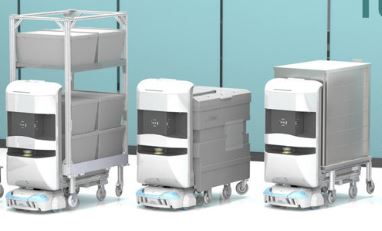
TUG robots
Beyond the operation room and rehabilitation centers, robots are making their mark in the day-to-day operations of hospitals and pharmacies.
- TUG Robots: These robots transport medications, lab specimens, and other materials throughout hospitals.
- Pill-Picking Robots: In pharmacies, these robots can quickly pick, pack, and dispense medications, reducing human error.
4. Telemedicine Robots
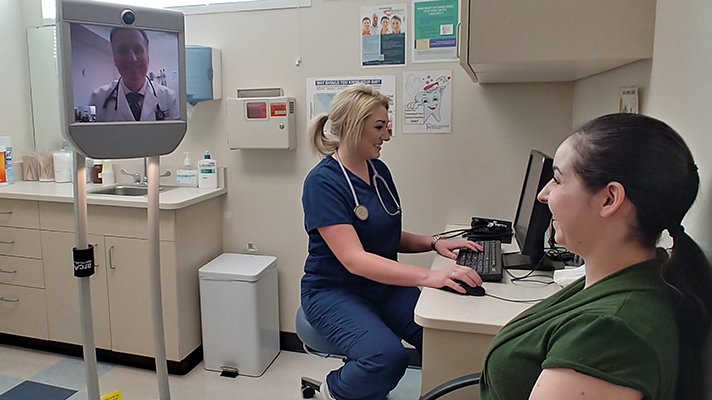
The recent global health crisis accentuated the importance of remote healthcare, and telemedicine robots emerged as invaluable assets. They connect patients with physicians without the constraints of location.
- Remote Presence Robots: Allow doctors to interact with patients in real-time, offering a virtual yet personal consultation.
- Health Monitoring Robots: Equipped with sensors and cameras, these robots can monitor vital signs and provide real-time data to doctors.
Key advantages are;
- Overcome geographical barriers, ensuring patients in remote areas receive quality care.
- Reduce the risk of disease transmission, especially in epidemic scenarios.
- 24/7 monitoring for critical patients without the constant physical presence of medical staff.
Manufacturing and Prototyping Medical Robots
Medical robots, entrusted with the critical roles of accuracy and patient well-being, experience an intensive development process from idea to realization. This journey, encompassing both fabrication and prototype creation, is pivotal in guaranteeing the dependability and effectiveness of the end product. Let’s explore this detailed progression further.
1. The Crucial Stage of Prototyping
Medical Robot prototyping is one of the significant stages of robot manufacturing. Before any robot can be manufactured and deployed in a medical setting, it must first be prototyped. This preliminary model, though not fully functional, offers a tangible blueprint of the envisioned product.
2. Key Considerations in Manufacturing
Post prototyping, the phase of manufacturing begins. During this stage, the prototype evolves into a functional robot, ready for real-world applications. Several considerations dominate this phase to ensure the robot’s efficacy and safety.
- Material Selection: Medical robots often require biocompatible materials, especially if they are to interact directly with the human body. Stainless steel, titanium, and certain medical-grade plastics are commonly used.
- Precision Engineering: Given the sensitivity of medical procedures, the robots need to be manufactured with utmost precision. Advanced machining processes, such as CNC machining, ensure this accuracy.
- Safety and Compliance: Every medical robot must adhere to strict regulatory standards. Ensuring compliance with bodies like the FDA is imperative.
- Quality Control: Before being deployed, these robots undergo a series of stringent quality tests to ascertain their functionality and safety.
Challenges and Solutions in Manufacturing and Prototyping
The pathway from ideation to a fully functional medical robot isn’t devoid of challenges. However, understanding these can guide solutions.
Table: Challenges and solutions and medical robot prototyping
| Challenges | Solutions |
|---|---|
| Maintaining precision and accuracy | Using state-of-the-art CNC machines and precision instruments |
| Ensuring biocompatibility | Selection of certified biocompatible materials |
| Meeting regulatory compliance | Continual updates on regulatory guidelines and regular audits |
| High production costs | Investing in automated and efficient production systems |
Prolean’s Role in Medical Robot Prototyping
Entrusted with the critical task of prototyping medical robots, Prolean’s services stand out. Our commitment to precision, quality, and innovation ensures that every prototype resonates with the vision of its creators while aligning with medical needs.
- Advanced Technologies: Prolean uses state-of-the-art technologies for prototyping, ensuring the replica is as close to the envisioned product as possible.
- Feedback Loop: By integrating feedback mechanisms, we continually refine the prototype based on real-world testing and expert insights.
- End-to-End Solutions: Beyond just creating the prototype, Prolean aids in navigating the nuances of transitioning from a prototype to the manufacturing phase.
Manufacturing Methods for Medical Robots and Their Components
The manufacturing methods of medical robots adopted significantly influence their functionality, precision, and longevity. Medical robots and their components, known for their intricacies and requirement for utmost precision, utilize a variety of manufacturing techniques. Each technique has its distinct advantages, best-fit applications, and considerations. Let’s take a look at these methodologies.
1. CNC Machining
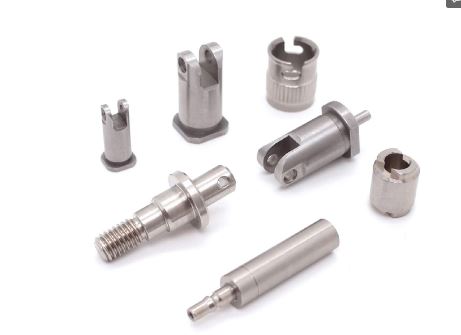
Various medical robot parts created with CNC machining
CNC machining employs computer-driven tools to subtract material and achieve desired shapes with high precision. The joints, motors, and precision sensors of medical robots require CNC precision machining.
Table: CNC machining for medical robot manufacturing
| Category | Sub-category | Details |
|---|---|---|
| Applications in Medical Robotics | Components | Surgical instruments, joint replacements, and structural components for mobility. |
| Precision | Ideal for parts demanding tight tolerances like robotic arms. | |
| Material Versatility | Suitable for metals and tough plastics essential in the medical field. | |
| Advantages | High Precision | CNC machines offer tight tolerances, crucial for medical applications. |
| Versatility | Can handle diverse materials effectively. | |
| Repeatability | Essential for consistent production of medical parts. | |
| Considerations | Setup Costs | High initial setup costs for custom components. |
| Skilled Operators | Essential for achieving desired results. |
2. 3D Printing (Additive Manufacturing)
In addition, 3D printing is very suitable for highly customized robots. 3D printing can quickly produce the required customized structures and components. In addition, in the prototype production stage of medical robots, 3D printing is also used on a large scale because of its flexibility.
Table: 3D printing for medical robot manufacturing
| Category | Sub-category | Details |
|---|---|---|
| Applications in Medical Robotics | Components | Custom surgical tools, orthopedic implants, and patient-specific prosthetic guides. |
| Prototyping | Ideal for testing new robot designs. | |
| Customization | Suited for creating bespoke components for patient-specific needs. | |
| Advantages | Rapid Prototyping | Swift turnaround in model creation. |
| Flexibility | Supports on-demand customization. | |
| Cost-Efficiency | Reduced waste and lower costs for short production runs. | |
| Considerations | Strength | May not match the strength of traditional manufacturing methods. |
| Post-processing | Often requires post-processing for finish and strength. |
3. Insert Molding
Insert molding involves embedding components into molten material, solidifying them into a single piece.
Table: Insert molding for medical robot manufacturing
| Category | Sub-category | Details |
|---|---|---|
| Applications in Medical Robotics | Components | Electrical assemblies in robots, sensors integration, and protective casings. |
| Integration | Embedding electronic components in surgical robots for seamless functionality. | |
| Durability | Ensuring components are securely encased for longevity. | |
| Advantages | Integration | Allows for the combination of metal and plastics. |
| Durability | Offers wear-resistance and strength. | |
| Efficiency | Reduces the need for post-assembly. | |
| Considerations | Alignment | Ensuring proper alignment during the molding process is critical. |
| Material Compatibility | Material compatibility is essential to prevent part failure. |
What Are the benefits of Medical Robots?
Medical robots have undoubtedly ushered in a new age of healthcare delivery. By seamlessly amalgamating technology with medical expertise, they’ve brought forth benefits that redefine patient care, streamline procedures, and enhance medical outcomes. Below, we navigate through some of the most impactful perks of these futuristic marvels.
Enhanced Surgical Precision
The realm of surgery has been one of the primary beneficiaries of robotic interventions. With the inception of robots in operating rooms, the precision and control over surgical instruments have scaled new heights.
- Pinpoint Accuracy: Medical robots, governed by advanced algorithms, eliminate the scope of human tremors, ensuring pinpoint accuracy during surgeries. This is especially crucial during intricate procedures, such as neurosurgeries, where the margin of error is minimal.
- Minimally Invasive Procedures: Through the use of medical robots, surgeries that once required significant incisions can now be performed with minimal invasiveness. This results in reduced scarring, quicker recovery times, and a lesser risk of post-operative complications.
- Enhanced Visualization: With augmented reality and high-definition 3D vision, surgeons receive an unprecedented view of the operation site, allowing for better decision-making during procedures.
- Extended Surgical Capabilities: Robots can access hard-to-reach areas, granting surgeons the ability to perform procedures that were once deemed too risky or impossible.
Expanding the Reach of Healthcare
Robots are not just confined to the operation theater; they’re expanding the horizons of healthcare delivery.
- Remote Consultations: Telemedicine robots enable doctors to consult patients from any corner of the globe. This is a game-changer for rural or hard-to-reach areas where medical expertise is scarce.
- Training and Mentorship: Robots equipped with cameras and communication tools allow novice surgeons to receive real-time guidance from experts during procedures. This hands-on training approach is revolutionizing medical education.
- Swift Response: In emergency situations, immediate medical attention is vital. Robots equipped with diagnostic tools can swiftly attend to patients, gather essential data, and relay it to medical professionals for timely intervention.
- Automated Routine Tasks: From dispensing medicines to taking vitals, robots in hospitals are taking over routine tasks, allowing medical staff to focus more on patient care.
Augmented Rehabilitation
The rehabilitation process post-injury or surgery is pivotal for patient recovery. Robots are playing an increasingly influential role in this sphere.
- Customized Therapy Sessions: Rehabilitation robots can be programmed to cater to the specific needs of each patient, ensuring therapy sessions are effective and tailored.
- Consistent Monitoring: With sensors and data analytics, these robots constantly monitor a patient’s progress. This data-driven approach aids therapists in making informed decisions regarding the treatment plan.
- Motivation through Gamification: Many rehabilitation robots incorporate gamified exercises, making therapy sessions engaging and motivating for patients, especially children.
- Safety: Robots ensure that exercises are done correctly, reducing the risk of further injuries. Moreover, for patients with limited mobility, robots can assist in movements, ensuring they’re safely supported.
Future Trends in Medical Robotics
Medical robotics, having already revolutionized the healthcare domain, promises an even brighter future with new advancements on the horizon. The transformative impact of these robots goes beyond the operating room, venturing into diagnostics, patient care, and rehabilitation. As technology continues to evolve, so will the capabilities of medical robots. Let’s delve into some emerging trends that are set to redefine the contours of healthcare.
AI and Deep Learning Integration
- Predictive Analysis: Artificial Intelligence, when integrated into medical robots, will facilitate predictive analysis, forecasting patient needs or potential complications based on vast amounts of data. Such insights can prompt early interventions, potentially saving lives.
- Adaptive Learning: Deep learning allows robots to adapt over time. As they encounter diverse medical scenarios, they learn, refine their actions, and optimize procedures. Over time, this could lead to more personalized patient care and improved outcomes.
- Automated Diagnostics: Imagine a robot analyzing symptoms, medical histories, and even genetic data to diagnose ailments. With the fusion of AI and robotics, this could become a reality, ensuring quicker and more accurate diagnoses.
- Real-time Decision-making: During surgeries or critical care, robots integrated with AI can make real-time decisions, adjusting to unforeseen challenges, enhancing the precision and success rate of medical procedures.
Collaborative Medical Robots
- Human-Robot Symbiosis: The future is not about robots replacing humans but collaborating with them. Medical staff, aided by robots, can perform their tasks more efficiently. For instance, a robot might hold or adjust a surgical tool, leaving the surgeon to focus on the main procedure.
- Feedback Mechanisms: These robots will have feedback mechanisms allowing medical professionals to guide them, ensuring they complement rather than hinder medical procedures. It’s a two-way street: the robot aids the professional, and the professional refines the robot’s actions.
- Training and Skill Development: Collaborative robots will play a crucial role in medical training. With haptic feedback and virtual reality integrations, budding medical practitioners can practice procedures in a risk-free environment, with robots guiding and correcting their actions.
- Enhanced Patient Interaction: Beyond surgeries and diagnostics, robots will play a pivotal role in patient interaction. Robots that can understand and respond to human emotions can offer comfort, answer queries, or even assist in post-operative care, ensuring patients feel valued and understood.
Read More:
Industrial robot Types Examples (2022)
Conclusion
From enhancing surgical precision to personalizing patient care, medical robots are redefining boundaries and setting new standards. As AI continues to integrate more deeply with robotics, and as collaboration between man and machine becomes more seamless, we are on the brink of a healthcare revolution.
The future promises not just efficiency but also a more humane touch, with robots amplifying the best aspects of human medical care. For all stakeholders, from medical professionals to patients, this means better outcomes, reduced risks, and a healthcare experience tailored to individual needs. As we look forward, it’s clear that the amalgamation of technology and human expertise is not just the future—it’s the present. Embracing this new era of medical robotics will undoubtedly usher in a brighter, healthier tomorrow.
FAQs
What are medical robots?
Medical robots are automated systems used in clinical settings to assist in surgeries, rehabilitation, and other healthcare tasks.
How do surgical robots enhance procedures?
Surgical robots offer unparalleled precision, stability, and can access hard-to-reach areas, making surgeries more efficient and less invasive.
How does Prolean contribute to medical robot development?
Prolean offers prototyping services, ensuring that medical robots are built with precision, adhering to the highest healthcare standards.
Are medical robots safe?
Yes, medical robots undergo rigorous testing and adhere to strict safety protocols and medical standards.
How do telemedicine robots function?
Telemedicine robots enable doctors to interact with patients remotely, using cameras, microphones, and a stable internet connection.
What’s the future of medical robots?
The future promises AI-integrated robots, deep learning capabilities, and more collaborative robots that work seamlessly with medical staff




0 Comments